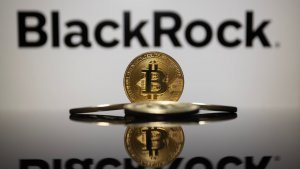The Reserve Bank of India (RBI) kept its key interest rate unchanged on Wednesday as widely expected, but changed its policy stance to "neutral", opening the door for rate cuts as early as December. The Monetary Policy Committee (MPC), which consists of three RBI and three external members, kept the repo rate (INREPO=ECI), opens new tab unchanged at 6.50% for a tenth straight policy meeting. The committee, however, changed its policy stance to "neutral" from "withdrawal of accommodation".
The committee voted unanimously to change the stance but said they will remain unambiguously focused on the durable alignment of inflation to target while supporting growth. Five out of six members vote in favour of holding rates. Newly appointed external member of the committee Nagesh Kumar voted to cut the policy rate by 25 basis points. "It is with a lot of effort that the inflation horse has been brought to the stable - that is closer to the target," Reserve Bank of India governor Shaktikanta Das said, announcing the rate decision.
"We have to be very careful about opening the gate as the horse may simply bolt again. We must keep the horse on (a) tight leash so that we do not lose control," Das said. India targets to keep retail inflation at 4%.
Rates were predicted to be kept on hold by 80% of the 76 economists polled by Reuters but many expected cuts starting in December. The MPC last changed rates in February 2023, when the policy rate was raised to 6.50%. It raised rates by a cumulative 250 basis points (bps) between April 2022 and February 2023, as the economy emerged from the COVID-19 pandemic and inflation took off. Wall Street's main indexes finished higher on Tuesday, as investors shifted their focus to upcoming inflation data and the start of third quarter earnings season.
"We continue to expect the onset of rate-easing from December with a 25-bps cut, but the scale of easing in this cycle is expected to be shallow with limited scope for back-to-back easing in each policy (meeting)," said Upasna Bhardwaj, chief economist Kotak Mahindra Bank. IDFC FIRST Bank expects a total of 50 bps points in rate cuts by March 2025, beginning with a 25 bps cut in December. Equity markets gained, led by interest rate sensitive sectors, and bond yields fell as the central bank indicated rate cuts ahead. The Indian rupee was marginally higher.
The RBI has lagged its global peers in easing policy as local inflation has remained above target due to high food prices. Central banks in developed economies, led by the U.S. Federal Reserve, in September delivered their biggest collective push on interest rate cuts since the widespread easing early in the COVID-19 pandemic.
The chart shows the India monetary policy rate.The rate was held steady for the 10th straight meeting at 6.5% on Oct.9 policy meet date The chart shows the India monetary policy rate.The rate was held steady for the 10th straight meeting at 6.5% on Oct.9 policy meet date Annual retail inflation (INCPIY=ECI), opens new tab remained below the central bank's target of 4% for a second consecutive month, clocking in at 3.65% in August but higher than the revised 3.60% in July and economists' forecast of 3.5%.
The central bank expects inflation to average 4.5% in the financial year 2024-25, unchanged from the forecast provided at the August meeting. While the recent escalation of tensions in the Middle East has shrouded the outlook on the inflation trajectory, concerns about economic growth have also begun to emerge.
High-frequency indicators such as the manufacturing PMI slowed to an eight-month low in September, while the services PMI eased to a 10-month trough, latest data showed. India's overall growth slowed to 6.7% in the June quarter.
The central bank, however, retained its GDP growth forecast for the current financial year at 7.2%. The prevailing and expected inflation-growth balance have created conditions for a shift in the monetary policy stance, Das said. There is greater confidence on the last mile of disinflation, Das said, while adding that significant risks persist from adverse weather conditions, geopolitical conflict and the recent increase in some commodity prices.












